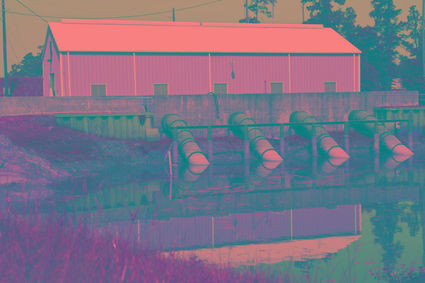Southeast Texas water supplies runneth over
Last updated 9/16/2014 at Noon
Fresh water is arguably one of the most important natural resources on the earth. Likewise, Southeast Texas has abundant supplies from more than adequate rainfall. Other parts of the state aren't as fortunate, particularly with the needs of growing urban areas. Some residents may wonder how secure Southeast Texas water rights are from its larger neighbors.
Proposition 6
Proposition 6 is legislation that passed in 2013 with more than 73 percent of the vote to meet the state's future water needs. Proposition 6 is a constitutional amendment that took $2 billion out of the state’s Rainy Day to create two accounts to help fund water projects in the state: the State Water Implementation Fund of Texas (SWIFT) and the State Water Implementation Revenue Fund of Texas (SWIRFT), according to.... The initial $2 billion was transferred from the Rainy Day fund to the SWIFT. Over time, revenue generated from SWIFT projects would be into the SWIRFT.
The SWIRFT money would then be used to fund even more projects. Together, backers argue, accounts could fund over $25 billion worth of projects over the next 50 years.
The accounts would be managed by the Texas Water Development Board (TWDB). The TWDB would manage the money and make decisions about which projects to fund.
Ann Galassi, assistant general manager of the SRA, said they are not selling water rights, they do have a contract for the cost of raw surface water for Toledo Bend and the run of the Sabine River, predominately from industrial users. “We have plenty of water,” Galassi said. “We have no large contracts currently. We're in a water-rich area.” She explained it's more expensive for large municipalities to transport water from a distance rather than from closer sources.
For instance, the city of Dallas gets the majority of their water from Lakes Tawakoni and Lake Fork. In 1956 the SRA began its first major development in the basin by entering into a contract with the city of Dallas to build, own, and operate the Iron Bridge Dam and Reservoir (Lake Tawakoni) project. This project was completed in 1960. The bistate (Texas-Louisiana) Toledo Bend Reservoir Project was initiated in 1955 by an agreement between the Sabine River Authority of Texas and the Sabine River Authority of Louisiana. The project was completed in 1966, according to the Texas State Historical Association website.
Those two lakes, however, haven't gotten as much rainfall compared to Toledo Bend. Lake Tawakoni is five feet low and Lake Fork is 10 feet low while Toledo Bend is higher than normal at 172 feet. “They have drought conditions there and they're using conservation efforts,” she said. Access to the Toledo Bend Reservoir is not currently in the city of Dallas' 50-year water plan. The next 50-year water plan, though, would consider 100,000 acre feet from the reservoir. “It may be something in the future. We'll meet the needs of our basin first,” Galassi said.
She added one downside for the area is loss of State Rep. Allan Ritter who is stepping down from the Legislature. Galassi said as chairman of the natural resources committee, he has been a proponent for Southeast Texas junior water rights. “Junior water rights may come up again (in the 2015 Legislative session). We'll stay on top of it and give our input and we'll manage,” she said.
A report titled “City of Dallas Planning and Water Supply Strategies,” dated on Dec. 6, 2006, stated Dallas and other area water agencies looking to 2060 for possible water sources such as :
A regional approach for new water sources
Funding for new water sources is more cost effective when it is a collaborative effort
Examples include water resources from Toledo Bend, Lake Livingston, Sam Rayburn/B.A. Steinhagen as listed in addition to other areas
The report also read Dallas will need to service a population that will grow over 4.5 million by 2060.
Lower Neches Valley Authority
Scott Hall, general manager of the LNVA in Beaumont, said Lake Sam Rayburn is at 91 percent capacity. “That's wonderful for this time of year,” he said. “We've had timely rainfall this summer at the right places. The LNVA is the water supplies for Jefferson County, Chambers County, the Bolivar Peninsula, and agricultural and industrial uses. As with Galassi, Hall believes the city of Dallas will first develop water supplies closer to them instead of farther away.
“It's expensive to build infrastructure and move water. They will develop close to them,” Hall said. “It's expensive to run water with obstacles to be moved so the water can be taken over long distances.” Hall said there has been no move in the Legislature to change the current situation regarding junior water rights. “We're in good shape. We're meeting the needs of folks today and working for the long-term needs of East Texas,” Hall said.
















Reader Comments(0)